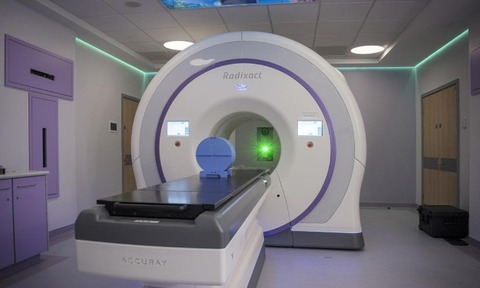Royal Marsden claims first with online daily adaptive radiotherapy treatment
5 May 2025

London’s Royal Marsden Hospital is claiming a medical first for a radiotherapy planning system that can generate personalised cancer treatment capable of adapting on a daily basis.
RaySearch Laboratories’ online adaptive radiotherapy (oART) can adjust a patient’s plan based on anatomical changes, for example weight fluctuations and bladder filling.
“Being able to tailor each treatment session to the patient’s daily anatomy is a major step forward in delivering more personalised cancer care. This achievement reflects the Royal Marsden’s ongoing commitment to leading innovation in radiotherapy,” commented consultant clinical oncologist Dr Susan Lalondrelle.
Prior to the introduction of the new system, radiotherapy required a CT scan for a treatment plan devised by clinicians that would incorporate healthy tissue in order to accommodate anatomical changes that occurred.
While this involved potential use of healthy tissue, in the case of marked physical changes occurring prior to operation, a new health plan would need to be devised.
The Accuray Radixact linear accelerator (linac) technology combines the latest version of the RayStation treatment planning system with the Royal Marsden’s oncology information system.
While the linac is a feature in other NHS centres, its use with online adaptive technology represents a step forward, said the Royal Marsden Trust.
Use of linac’s integrated CT scanner provided high-quality images over the whole treatment area, said the hospital, allowing more accurate assessment of patients’ internal anatomy enabling more precise radiotherapy.
Patient Susan Gravett, who was diagnosed with endometrial cancer in late December 2024, is the first patient to benefit from the system.
“I’m honoured to have been the first patient to receive the new online adaptive radiotherapy. Following my diagnosis, I had a hysterectomy, then chemotherapy and finally radiotherapy,” she said.
“It was exciting to have the opportunity to benefit from a new way of delivering radiotherapy treatment that will hopefully give patients in the future fewer side effects.”

